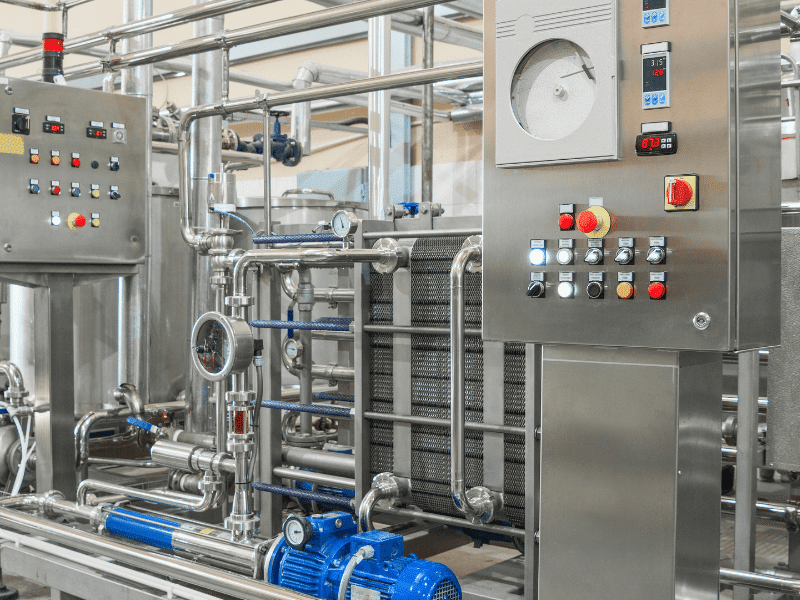The year 2025 is a major turning point for the global adhesive industry. Escalating tariff wars and new import duty regulations are fundamentally changing supply chains. So, you see, this is driving up costs and forcing manufacturers to completely rethink their strategies. This crisis guide gives you a full overview of the challenges and possible solutions facing the adhesive sector in this turbulent new situation.
The Impact of Adhesive Tariffs
The world’s economies are very connected. This means that when trade policy changes, it has effects that spread far and wide. The adhesive industry relies on a complex web of raw material suppliers and international markets.
Because of this, it is especially at risk from the impact of import duties. In 2025, several important things are happening at the same time. You will see, this is creating a perfect storm of rising costs and logistical problems.
The Increasing Adhesive Tariffs Between the US and China
The trade issues between the United States and China have been going on for a while. Now, in 2025, they are set to get even more intense. New tariffs and actions taken in response are specifically targeting industrial adhesives.
They are also targeting the raw materials used to make them. The President-elect has suggested taking even stronger measures. Throughout the campaign, they mentioned possible tariffs. These could be from 10% to 20% on all imports.
There could even be a massive 60% on products from China. While this might just sound like campaign talk, even a small bit of these suggested tariffs could really mess up the supply chain for the raw materials used to make adhesives. This point is noticeable, it could affect the industry for a long time.
China Imposes 34% Tariff on USA Imports
As of early April 2025, the situation is already unstable. After the US put more duties on goods from China, China has announced it will put tariffs on all goods from the US. This point is important, these will start in the middle of April. These tariffs were first set at 34%, but they could go even higher.
This would create a back-and-forth situation that directly affects how much it costs to import and export adhesives and the things they are made of. So the basic point is, import duties on industrial adhesives traded between these two big economies are going to increase a lot.
Europe’s Carbon Border Tax and Adhesive Supply Chains: An Overview
Beyond the direct trade conflict, the European Union’s Carbon Border Adjustment Mechanism (CBAM) is another big thing changing the adhesive industry in 2025. While it mainly targets industries that produce a lot of carbon, the CBAM will indirectly affect adhesive manufacturers. This will happen if they import raw materials or finished products from areas that don’t have such strict rules on carbon emissions.
The CBAM is being introduced gradually, starting with just reporting what’s happening. But eventually, it will lead to higher costs for some petroleum-based adhesive parts. The EU Carbon Border Tax glue industry will need to change to meet these new rules. Simultaneously, this could affect where they get their materials and how much they charge for their products.
Furthermore, the problems caused by Brexit adhesive supply chains are still causing logistical and cost-related issues for companies that work in or trade with the United Kingdom and the EU. Engineers know it, managing these supply chains requires careful planning.
How to Handle the Crisis: Strategies for Glue Makers
Faced with rising supply chain costs for glue manufacturers, companies need to take action. They must come up with smart plans to lessen the impact of these tariffs and regulations. Several key areas need attention.
Rethinking Sourcing and Finding Other Suppliers: A Key Strategy
One of the first things to do when tariffs go up is to look for other places to get supplies. For companies that rely heavily on importing from the US or China, finding alternative suppliers for adhesives avoiding US tariffs is essential. This might mean looking at suppliers in regions that have better trade deals.
It could also mean investing in making more products themselves. China, for example, will likely find other places to get its supplies. They might turn to countries in the Middle East that have propane and Russia for crude oil. This would help them depend less on imports from the US and still meet their industrial needs.
In the same way, companies in the US and EU might need to think about working with manufacturers in Southeast Asian countries or other regions where tariffs aren’t as high. CNC machining shops, for instance, might need to find new sources for specialized adhesives used in their processes.
Cutting Production Costs Through Efficiency and New Ideas
When the costs of materials go up, it’s very important to make internal processes better to reduce glue production costs after tariffs. This could mean using more efficient ways of making things. It could also mean investing in machines that do the work automatically, which lowers the cost of labor.
And it could involve carefully looking at the design of products to use less material without making them any less effective. Additionally, spending money on research and development to create new adhesive formulas is a good idea.
These new formulas could use cheaper or easier-to-get raw materials. This could give a company a long-term advantage over its competitors. Definitely it is obvious, finding ways to cut costs is crucial for survival.
Understanding and Using Cross-Border Manufacturing Loopholes
Understanding the complicated rules of international trade is very important. Finding and using any cross-border manufacturing loopholes that exist within the current tariff rules could provide some relief. This might involve changing where products are made or how they are made.
The goal would be to take advantage of more favorable tariff categories or duty drawback programs where possible. However, companies must be very careful to make sure they are following all the rules. You know, not doing so can lead to serious problems.
Managing Customs and Following Rules
The increasing complexity of international trade in 2025 means we need to really understand customs procedures and how to follow the rules. Customs bond requirements for synthetic glues and other adhesive products will need careful attention. This will ensure that importing goods goes smoothly and doesn’t cost too much.
Also, manufacturers need to be aware of the possibility of anti-dumping duties on polyurethane adhesives and other specific types of products. These duties can significantly increase the cost of importing. Keeping up with the latest trade rulings and getting expert advice on customs rules are essential for getting through this difficult time. Why does it matter? Because these duties can drastically affect your bottom line.
Predicting and Adapting to Cost Increases
The cost of some specific raw materials used to make adhesives is also going up. For example, the 2025 cost increase forecast for epoxy resins suggests that prices might rise. This is because the materials used to make them are costing more and the market is changing. Manufacturers need to watch these trends closely.
They should also include potential price increases in their own pricing plans and financial forecasts. Asking “Will glue prices go up in 2025?” isn’t just guessing; it’s a real concern. It requires companies to plan ahead and talk to their customers about it. Customers are so right in their opinion when they express concerns about rising costs.
Regional Impacts of Tariff Wars: A Closer Look
The effects of tariff wars and import duties aren’t the same everywhere. They vary quite a bit from region to region.
U.S. Focus: Handling Biden’s Adhesive Tariffs and Section 301
While we are focusing on 2025, the groundwork was laid by trade policies in the past. Understanding the Biden adhesive tariffs 2024 that are already in place is important for US-based manufacturers and importers. The same goes for the ongoing Section 301 tariffs glue. These existing tariffs give us an idea of what might happen with future policy changes and how they could affect the industry. You can say it is the most common fault to ignore the lessons of the past.
EU Focus: Adapting to the Carbon Border Tax and Brexit’s Effects
For adhesive companies that operate in or trade with the EU, the main concerns are about the EU Carbon Border Tax glue industry and the ongoing problems with Brexit adhesive supply chains. Getting ready for carbon reporting rules and finding better ways to get supplies to avoid disruptions caused by Brexit are top priorities.
China Focus: Responding to Tariffs and VAT Changes
Chinese companies that make and export adhesives are facing the challenge of dealing with tariffs from the US and other countries. Understanding if there will be changes to the China VAT refund adhesives policies could help them financially or create new opportunities in China itself or with countries in ASEAN.
Looking at working with ASEAN tariff-free adhesive partners might also become a more appealing plan for Chinese companies. This would help them sell their products in different markets and reduce the impact of tariffs from the US and other places.
Conclusion
The adhesive industry in 2025 is going through a period of big changes because of increasing tariff wars and new import duty rules. While these problems are definitely hard to deal with, they also give chances for companies that are creative to adapt. They can make their operations better and explore new markets and ways to get supplies. By taking action on the issues discussed in this guide, adhesive manufacturers can become stronger and get through the changing world of global trade. This will help them succeed in the long run. Do not panic, remember that change often brings opportunity.
JiuJu Tech offers a diverse range of epoxy and adhesive solutions for industrial applications. We give strong, long-lasting bonds suitable for demanding sectors like automotive and electronics.
Frequently Asked Questions (FAQs)
Q: What’s likely to happen to glue prices because of the 2025 tariffs?
A: Glue prices are very likely to go up in 2025. This is because of new tariffs on the materials used to make glue and on the finished glue products themselves. This is especially true for trade between the US and China. How much prices increase will depend on the specific kind of glue, where it comes from, and if the companies making it can absorb some of the extra costs.
Q: How will the trade war between the US and China affect whether we can get certain types of glue?
A: The increasing trade war could lead to a shortage of some glues. This could happen if manufacturers can’t find other places to get their supplies. It could also happen if the tariffs make importing glue too expensive. Companies that rely a lot on importing from either the US or China should start looking for other places to get their glue now.
Q: What is the EU Carbon Border Adjustment Mechanism (CBAM), and how will it affect the glue industry?
A: The CBAM is a plan that will put a tax on the carbon produced when making certain goods imported into the EU. This tax will apply to goods coming from countries that don’t have strict rules about carbon emissions. We are still learning exactly how this will affect the glue industry, but it will probably make it more expensive to import some parts of petroleum-based adhesives into the EU.
Q: What can companies that make glue do to lessen the impact of these tariffs?
A: There are several things glue makers can do. They can find different companies to buy their raw materials from. They can make their production processes more efficient to save money. They can look into whether there are any advantages to making products in different countries because of the tariffs. And they can be very careful about following all the customs and import rules.
Q: Are there any places that might become better to get glue from because of these tariffs?
A: Yes, some places might become more appealing for buying glue. This could include regions that have existing free trade agreements with big markets like the US and EU. For example, some countries in Southeast Asia might become good options for sourcing adhesives because companies will want to avoid or reduce the impact of tariffs. Also, for Chinese manufacturers, working with countries in the ASEAN region where there aren’t tariffs could be a good strategy.
Q: What are anti-dumping duties, and how might they affect the glue market in 2025?
A: Anti-dumping duties are taxes put on imported goods that are sold at prices that are too low and that hurt the companies making those goods in the country where they are being sold. There’s a chance that anti-dumping duties could be put on some glue products, like polyurethane adhesives. If this happens, it would make importing them even more expensive and could change how companies compete in the market.
Q: How can companies stay up-to-date on the constantly changing tariff situation?
A: To stay informed, companies need to keep watching for announcements from the government about trade policies. They should also talk to trade experts and customs brokers. And they should be involved in industry groups that provide updates and advocate for the industry on trade issues.
Q: What does the future look like for the glue industry considering these trade challenges?
A: While things might be difficult in the short term, the long-term future for the glue industry is still promising. Glue is essential for many different manufacturing industries. Companies that can adapt to the changing trade situation by finding smart ways to get their supplies, coming up with new ideas, and making their operations efficient will be in a good position to grow in the future.





